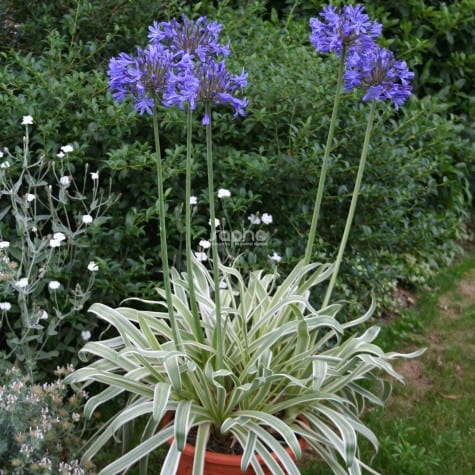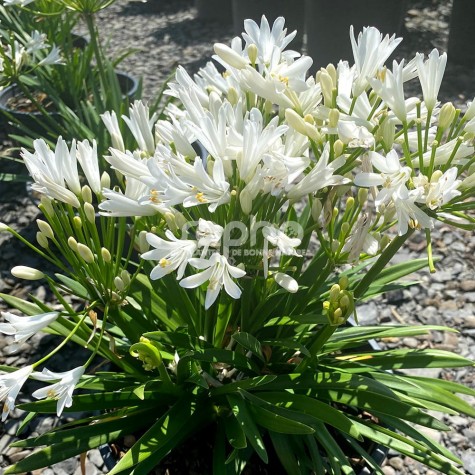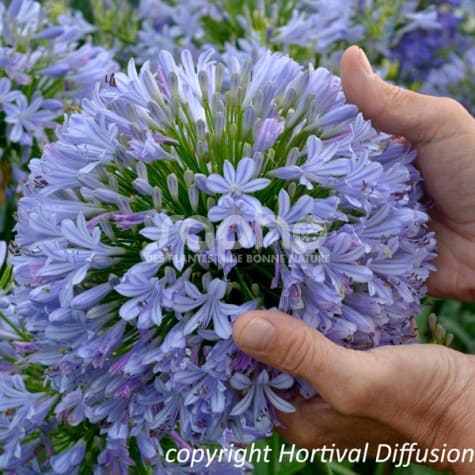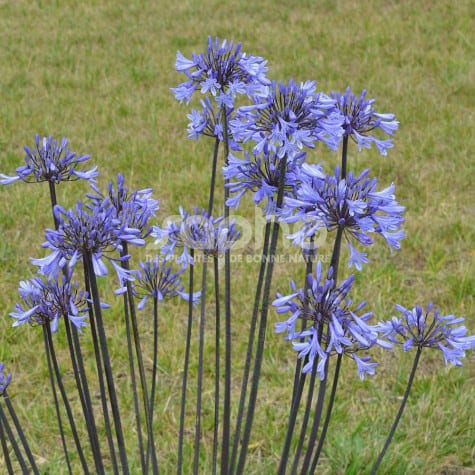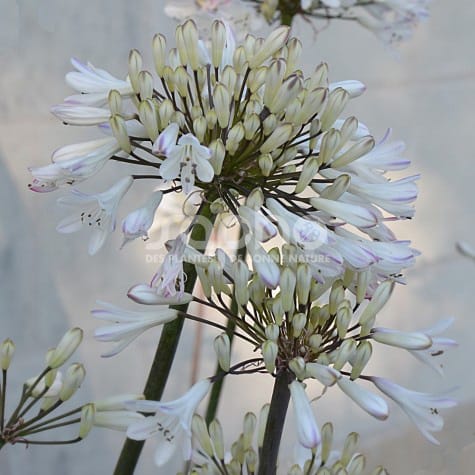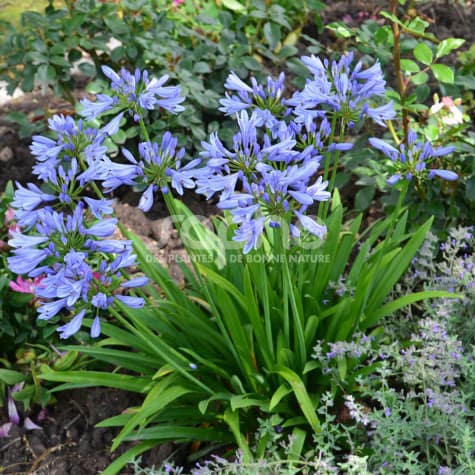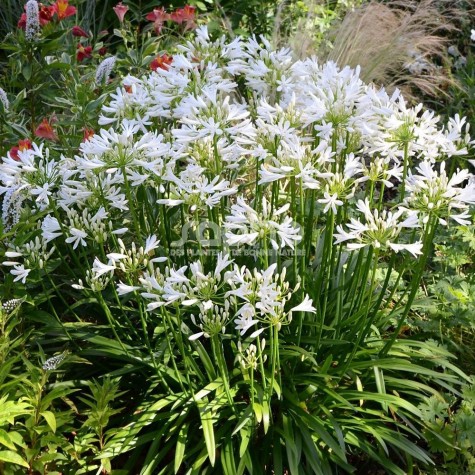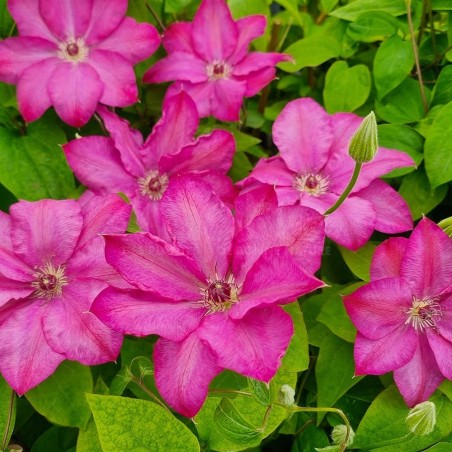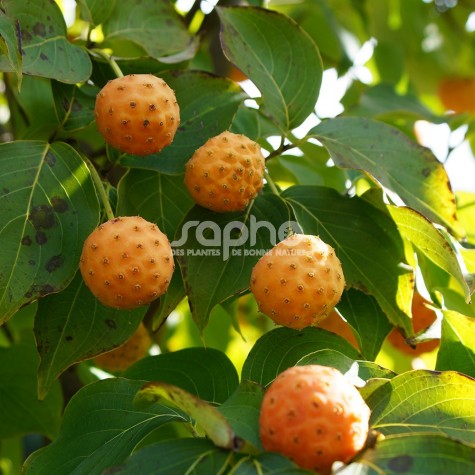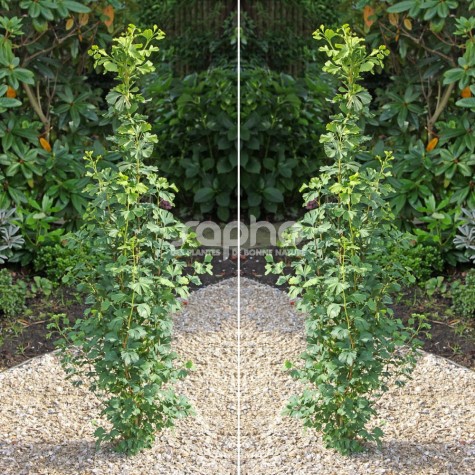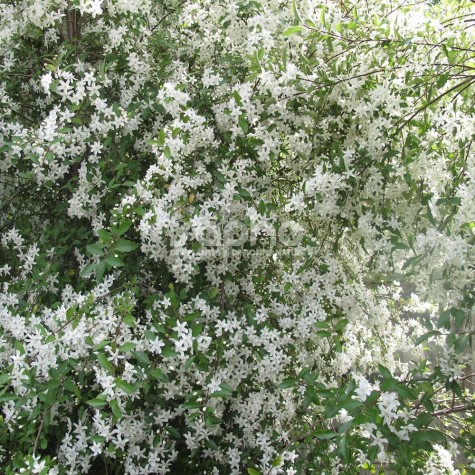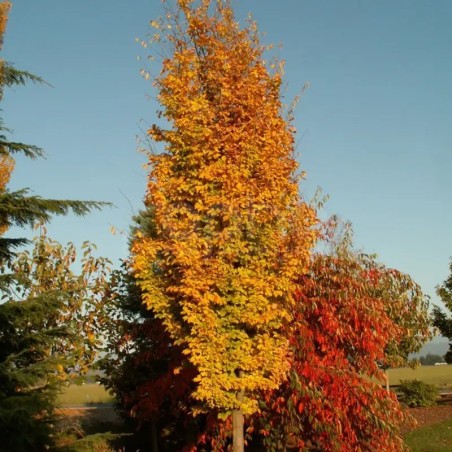A stylish variegated agapanthus!The evergreen BLUE PANACHE® is remarkable due to its bright foliage and a beautiful variegation. The leaves are 30 to 35 cm long and 2 to 3 cm wide. The green-grey leaf blade is widely edged in white and irregularly striated.The plant is vigorous and of a big developpement. In June and July 70 to 80 cm long floral stems carry beautiful blue inflorescences with more than a hundred flowers. The variety is sterile.Like all Agapanthus, BLUE PANACHE® loves rich and well-drained soils and tolerates droughts and chalk.It prefers sunny positons but also flowers well in half-shade.The plant must be protected in cold climatic zones (temperatures below -5° C).
Filter By
Foliage
Position
Where to find Sapho plants ?
For young plants
You will find the names of Sapho-licensed nurserymen at the bottom of each variety sheet.
For available plants
Please ask your nursery suppliers.
Each licensed propagator is free to market his young plants to all his customers.
Categories
Menu
All our varieties
A firm-favourite agapanthus that’s pocket-sized and abundantly flowering
This variety of agapanthus is very compact! It quickly forms a clump, while remaining small in size.
Ultra-compact and flowering from an early age, it produces large, pure white flowers borne on short, sturdy flower stalks! (10 to 15 cm)
Its attractive green foliage is evergreen.
Its unusual format means it can be used in a composition, pot, window box or bed, in association with other perennials.
🥇 Gold winner of the Innovert 2024 competition
Extraordinary globes of limitless blue flowers, more than 30 cm in diameter
The exceptional flowerheads of Agapanthus BLUE INFINITY® can reach more than 30 cm across! The countless florets in each bloom and the development of new flower spikes throughout the summer prolongs flowering « to infinity ». The clear blue colour typical of the Agapanthuses is here enhanced with central stripes of dark blue on each petal. BLUE INFINITY® is a tall variety with stout stems, reaching to between 1m and 1,50m. This Agapanthus is a garden wonder.It can be grown directly in the soil in temperate zones or in pots.
GRAPHITE® Blue: deciduous and hardy, original and graphic with blue flowersThis agapanthus offers all the characteristics of SAPHO's new GRAPHITE® range.They are deciduous and hardy, produce a large number of full inflorescences on graphite coloured floral stems in June and July. The umbels are dark blue, the petals are of two colours : blue with a white median.GRAPHITE® Blue brings an unusual contemporary effect to your flower beds or pots. This effect will be even stronger when planted in association with GRAPHITE® White.
GRAPHITE® White: deciduous, hardy, graphic, with delicate white flowersThis agapanthus offers all the characteristics of SAPHO's new GRAPHITE® range.They are deciduous and hardy, produce a large number of full inflorescences on graphite coloured floral stems in June and July. The flowers are white with some delicate purple traces on the back.GRAPHITE® White brings an unusual contemporary effect to your flower beds or pots. This effect will be even stronger when planted in association with GRAPHITE® Blue.
PITCHOUNE® Blue, a beautiful blue and compact African lily.
This Agapanthus presents all the qualities of the PITCHOUNE® range. Made up of numerous flowers, these umbels are bigger and of a deeper blue than those of dwarf Agapanthus praecox; they bloom in June - July, their flowering is good.The leaves are wide and evergreen.PITCHOUNE® Blue will have a nice summery effect, planted outside in areas of temperate climate, or in pots.
From the PITCHOUNE® range, a vividly reblooming white agapanthus
This Agapanthus presents all the qualities of the PITCHOUNE® range.The first white very dense umbels open in June-July. It's an exceptional variety due to its renewed flowering until early September, under good conditions.Thanks to its reduced dimensions, its evergreen foliage and long and dense flowering, PITCHOUNE® White is ideal, grown in pots or in the soil in areas of temperate climate.
A compact, highly floriferous clematis, ideal for terraces or small gardens.
Beautiful, bright pink flowers with lighter central veins and bright red petal edges.
Repeat flowering from May to September
A compact habit, small-growing plant
A nice variety for flowerpot, patio, or low wall
The elegance of Cornus is enhanced by the originality of its fruit
This variety blooms abundantly with white flowers from late May to early June.
Its decorative fruits, visible from afar, have original colors: yellow evolving into pumpkin-orange when ripe.
Its foliage also changes from green to orange-yellow in autumn.
This large shrub is easy to grow and has a flared habit when young.
Ideal as an isolated plant in the garden.
The most narrow of the Ginkgos'Menhir' is of special interest as it is very narrow. Its column shape and its reduced width allow it to be planted in rows or individually, in public parks as well as in smaller gardens.Its growth is vigorous and robust from an early age on.The fairly serrated leaves are of a blue shade of green-grey. Their golden-yellow tint in autumn is long-lasting.A male variety, without production of 'fruit'.
A small, ornamental tree with striking summer flowersHoheria sextylosa 'Snow White' is a small tree that keeps its ornamental character throughout the year with its elegant and persistant foliage, its glorious summer flowers and its naturally pyramidal habit. The simple, abundant and delicately perfumed, pure white flowers, resemble those of a cherry tree. The long and clearly toothed leaves are a brilliant green inserted in an attractive, black wood.Hoheria sextylosa 'Snow White' can grow to 4 or 5 metres in 20 years but readily accepts pruning. It may therefore also be used in hedges or maintained as a miniature if necessary.Ideally it prefers a mild, oceanic climate but is nevertheless hardy up to -10°. In colder regions, it's recommended to plant it in sheltered spots, away from cold winds.
A new asset for urban green spaces
An upright, columnar habit that holds up well with age
Young, tender-green foliage that turns from golden yellow to apricot in autumn, which is highly original for a Parrotia
Robust branches (which withstood the American ice storms)
Its habit, adaptation to different soil conditions and resistance to disease and urban conditions make it ideal for low-maintenance or no-maintenance areas along roadsides or in urban parks

